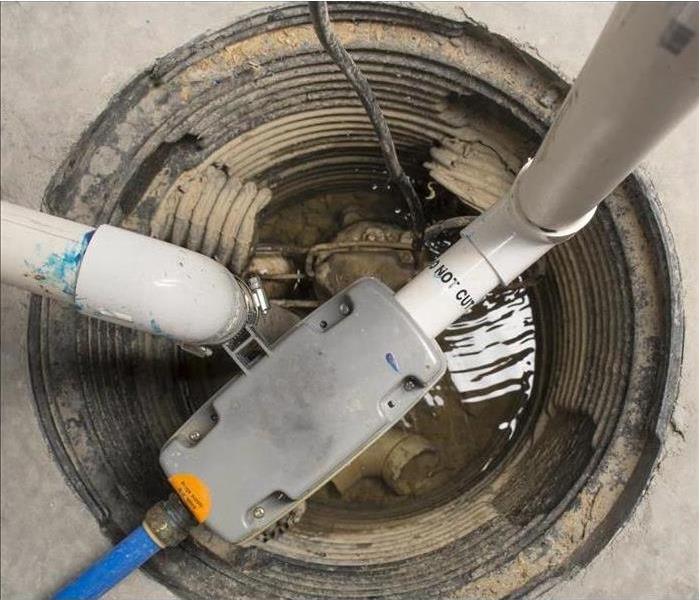5 Tips to Keep Your Sump Pump Running Like a Champ
5/1/2020 (Permalink)
Five Basic Steps To Perform Pump Maintenance
A working sump pump is essential for most basements in Walterhill, TN. As part of the invisible infrastructure, it’s typically only noticed when it isn’t working right. However, they do require some maintenance to remain in service for a long time. When neglected, they have a nasty tendency to break down during the heaviest needs, leaving you with a potential disaster.
There are five basic steps to performing pump maintenance:
- Test the ground fault circuit interrupter (GFCI).
- Test the backup battery.
- Test the trigger mechanism.
- Clean the pump screen and inspect for objects blocking inlet or discharge.
- Inspect the sump pit for debris.
Most Sump Pumps Are Wonderfully Simple Devices (Yet Perform a Vital Function)
In wet soil or in areas with a high water table, it’s natural for water to try to migrate into a basement. A sump pit is dug where the water would naturally accumulate and may have additional lines run to the pit to facilitate the flow of water. Once the water level reaches a certain point in the pit, the sump pump in the pit is designed to automatically turn on and shut off as needed.
Most Maintenance Is Simple
A GFCI circuit has a button labeled “test.” Press that button to see if it trips. If it does, reset it with the “reset” button; if not, you’ll need an electrician to repair it. The backup battery (if it has one) should also have a button to test it. You can also test the sump pump trigger by either manually (and carefully) lifting the float valve or pouring in enough water to actuate the pump.
Cleaning the screen and pit is relatively simple for those comfortable with basic machines. The pump should easily detach so you can inspect for blockage in the screen, hoses, or the pit itself. Simply remove the debris and reinsert the pump.
If you aren’t comfortable doing this (or if it’s not working right), you should call a local company used to working with water damage and pumps. They can help you deal with flood damage as well.




 24/7 Emergency Service
24/7 Emergency Service
